Input interpretation

4, 4'-dimethoxybenzhydrol
Chemical names and formulas
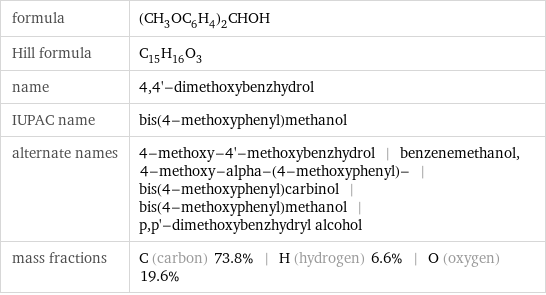
formula | (CH_3OC_6H_4)_2CHOH Hill formula | C_15H_16O_3 name | 4, 4'-dimethoxybenzhydrol IUPAC name | bis(4-methoxyphenyl)methanol alternate names | 4-methoxy-4'-methoxybenzhydrol | benzenemethanol, 4-methoxy-alpha-(4-methoxyphenyl)- | bis(4-methoxyphenyl)carbinol | bis(4-methoxyphenyl)methanol | p, p'-dimethoxybenzhydryl alcohol mass fractions | C (carbon) 73.8% | H (hydrogen) 6.6% | O (oxygen) 19.6%
Lewis structure
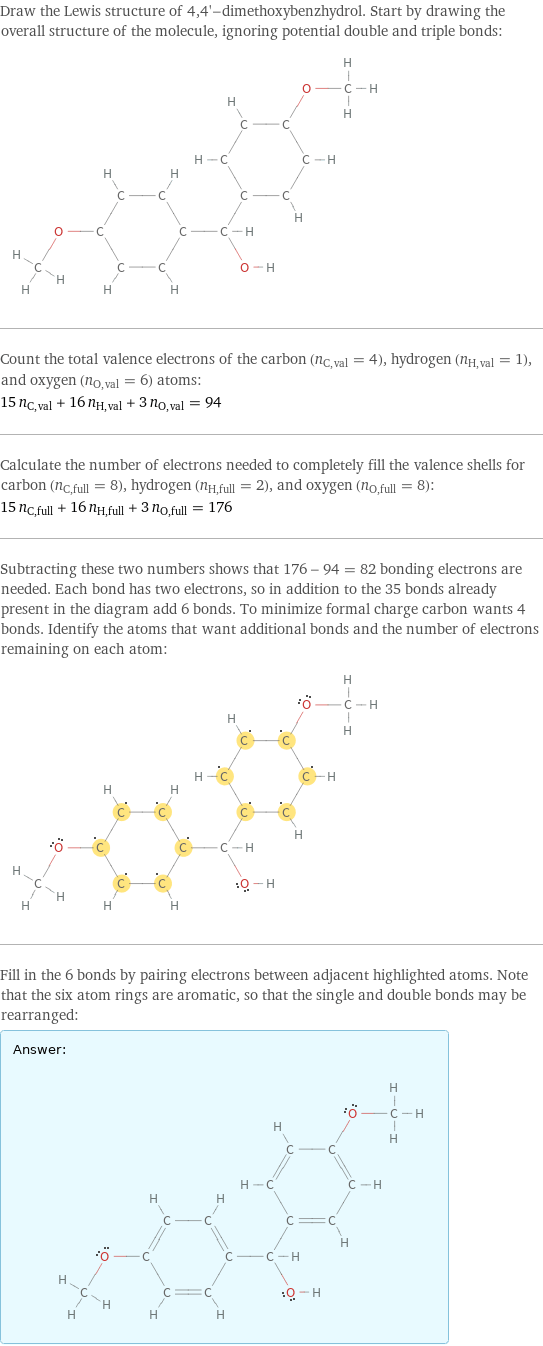
Draw the Lewis structure of 4, 4'-dimethoxybenzhydrol. Start by drawing the overall structure of the molecule, ignoring potential double and triple bonds: Count the total valence electrons of the carbon (n_C, val = 4), hydrogen (n_H, val = 1), and oxygen (n_O, val = 6) atoms: 15 n_C, val + 16 n_H, val + 3 n_O, val = 94 Calculate the number of electrons needed to completely fill the valence shells for carbon (n_C, full = 8), hydrogen (n_H, full = 2), and oxygen (n_O, full = 8): 15 n_C, full + 16 n_H, full + 3 n_O, full = 176 Subtracting these two numbers shows that 176 - 94 = 82 bonding electrons are needed. Each bond has two electrons, so in addition to the 35 bonds already present in the diagram add 6 bonds. To minimize formal charge carbon wants 4 bonds. Identify the atoms that want additional bonds and the number of electrons remaining on each atom: Fill in the 6 bonds by pairing electrons between adjacent highlighted atoms. Note that the six atom rings are aromatic, so that the single and double bonds may be rearranged: Answer: | |
3D structure
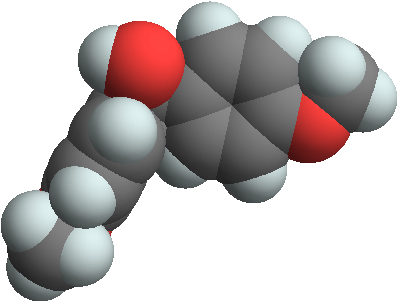
3D structure
Basic properties

molar mass | 244.29 g/mol phase | solid (at STP) melting point | 68.5 °C boiling point | 362 °C
Units

Chemical identifiers
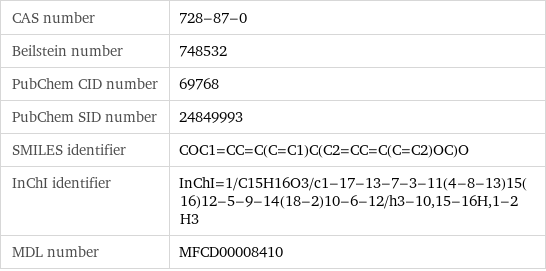
CAS number | 728-87-0 Beilstein number | 748532 PubChem CID number | 69768 PubChem SID number | 24849993 SMILES identifier | COC1=CC=C(C=C1)C(C2=CC=C(C=C2)OC)O InChI identifier | InChI=1/C15H16O3/c1-17-13-7-3-11(4-8-13)15(16)12-5-9-14(18-2)10-6-12/h3-10, 15-16H, 1-2H3 MDL number | MFCD00008410
NFPA label

NFPA label
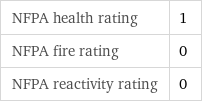
NFPA health rating | 1 NFPA fire rating | 0 NFPA reactivity rating | 0